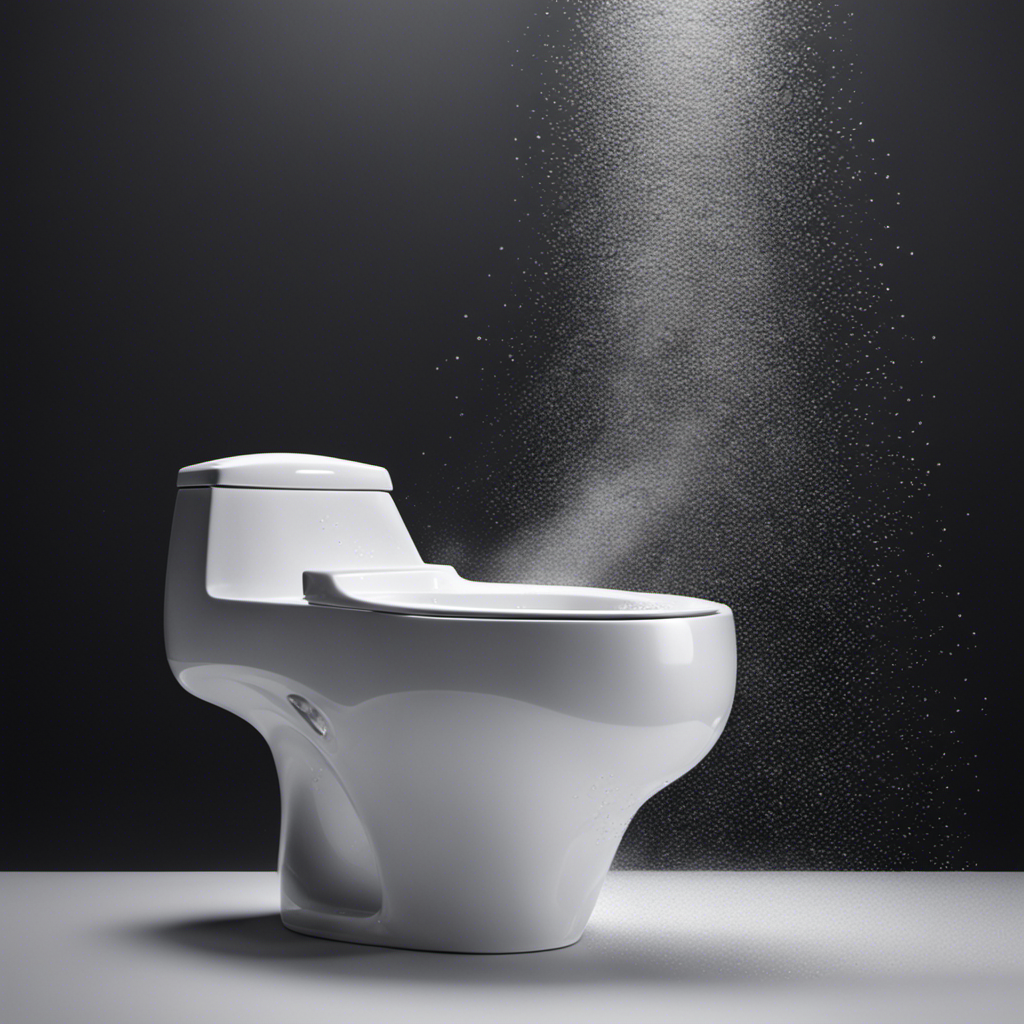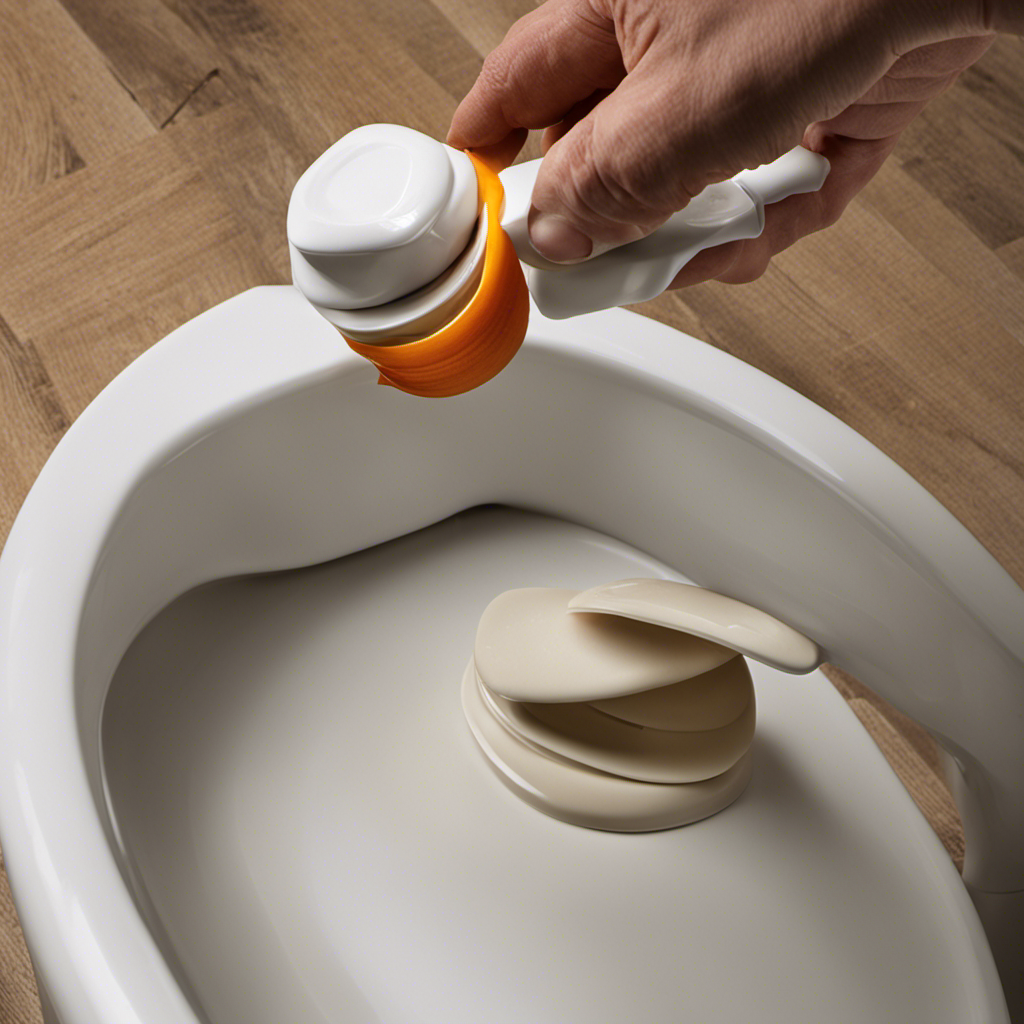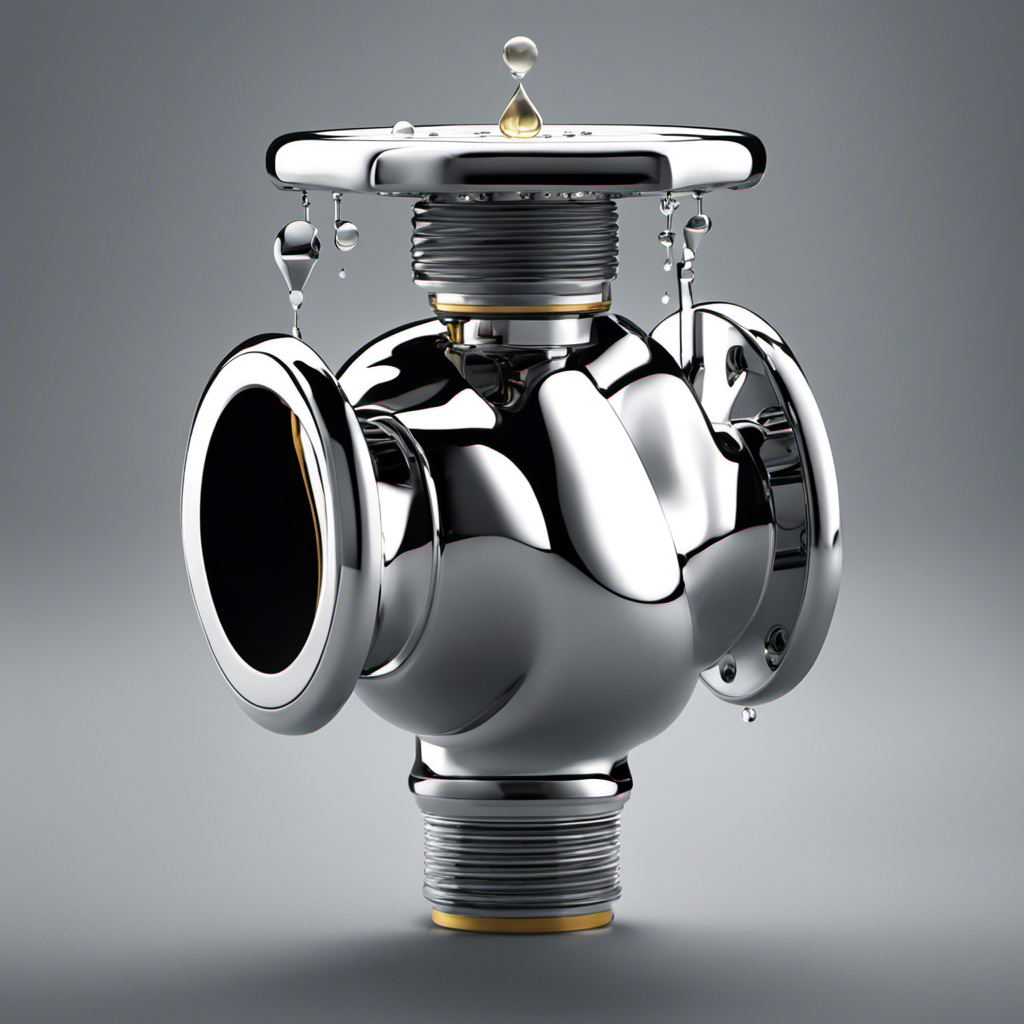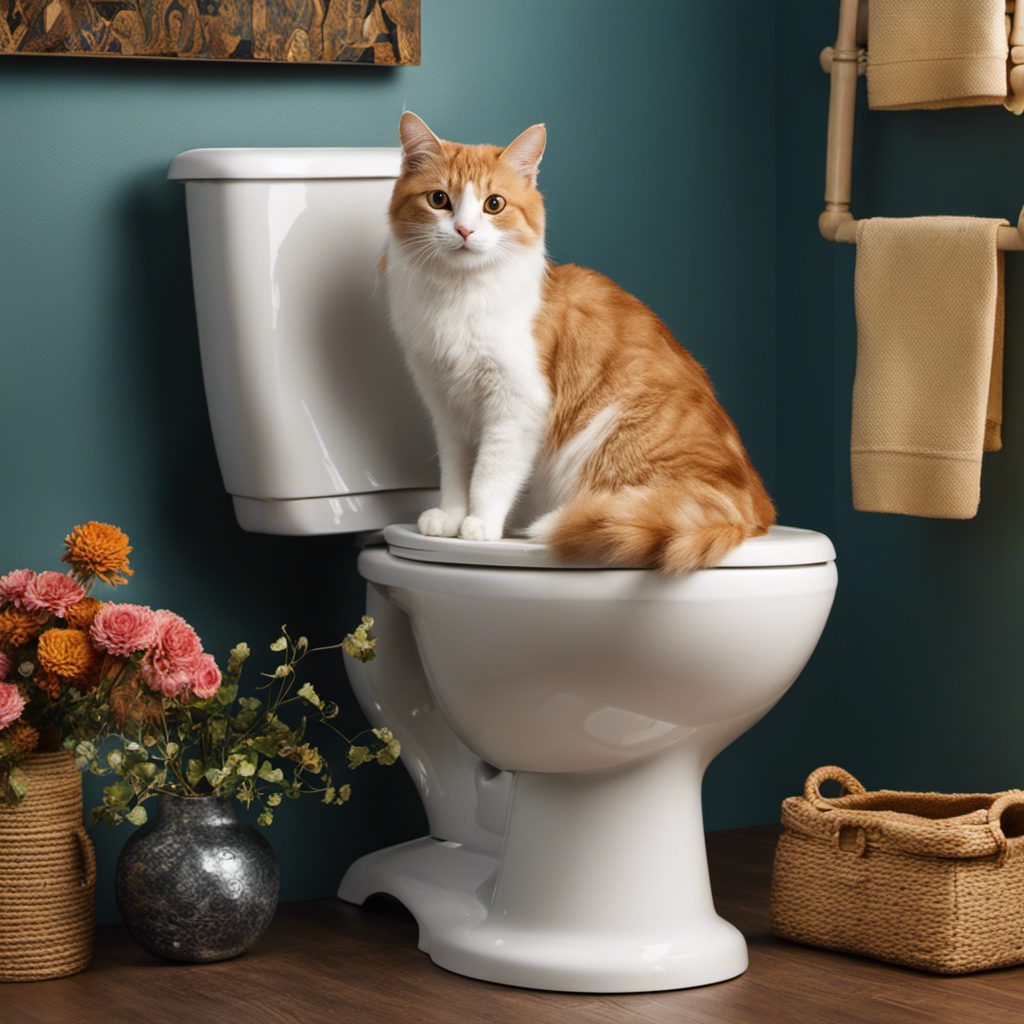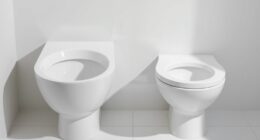Hey there! Sick of dealing with a dirty toilet seat? We’ve got you covered. In this article, we’ll show you how to clean your toilet seat without ruining it.
Regular cleaning is key to maintaining a hygienic bathroom, so let’s dive right in. Grab your cleaning supplies and get ready to tackle those stubborn stains and odors.
With our effective techniques, you’ll have a sparkling clean toilet seat in no time. Say goodbye to grime and hello to a fresh bathroom!
Key Takeaways
- Regular cleaning and maintenance of the toilet seat is important for hygiene and appearance.
- Gather the necessary cleaning supplies and use gentle cleaning methods to protect the seat from damage.
- Use a mixture of vinegar and water for disinfecting the seat, and rinse it with clean water afterwards.
- Consider using a toilet seat cover to protect the seat from damage, minimize the need for cleaning, and reduce the risk of stains and odors.
Importance of Regular Cleaning
Regular cleaning is essential for maintaining the hygiene and appearance of the toilet seat. It is important to prioritize cleanliness in this area of your bathroom, as it is a prime breeding ground for bacteria and germs.
Regular maintenance not only keeps the toilet seat looking clean, but it also helps prevent the spread of harmful pathogens. By regularly cleaning your toilet seat, you can reduce the risk of contracting illnesses and infections.
Additionally, regular cleaning can help prevent stains and discoloration, keeping your toilet seat looking fresh and appealing. The benefits of regular maintenance extend beyond just hygiene and appearance; it also prolongs the lifespan of your toilet seat, saving you money in the long run.
Gather the Necessary Cleaning Supplies
When it comes to cleaning your toilet seat effectively, there are a few key techniques you should know.
First, gather the necessary cleaning supplies, such as disinfectant wipes or a toilet bowl cleaner.
Second, be sure to protect the toilet seat from any damage or scratches by using a gentle cleaning method and avoiding abrasive materials.
Effective Cleaning Techniques
To effectively clean a toilet seat without ruining it, you can use a mixture of vinegar and water. This natural cleaning method is not only effective in disinfecting the seat, but it is also safe for the environment. Here’s how you can do it:
- Mix equal parts of vinegar and water in a spray bottle.
- Spray the mixture onto the toilet seat, making sure to cover the entire surface.
- Let the solution sit for a few minutes to allow it to break down any dirt or germs.
- Use a soft cloth or sponge to gently scrub the seat, paying attention to any stains or stubborn spots.
- Rinse the seat with clean water and pat dry with a towel.
Protecting the Toilet Seat
If you want to protect your toilet seat, consider using a toilet seat cover to prevent any damage or scratches. Toilet seat covers are an effective way to keep your seat clean and in good condition. They act as a barrier between the seat and any potential contaminants. By using a seat cover, you can minimize the need for frequent cleaning and reduce the risk of stains or unpleasant odors. When it comes to cleaning frequency, it is recommended to clean your toilet seat cover at least once a week. This will help maintain its cleanliness and prevent the buildup of bacteria or germs. By incorporating regular cleaning habits and using a toilet seat cover, you can prolong the life of your toilet seat and ensure a hygienic bathroom environment.
| Benefits of Using Toilet Seat Covers |
|---|
| Protects against damage and scratches |
| Minimizes the need for frequent cleaning |
| Reduces the risk of stains and odors |
Remember to clean your toilet seat cover at least once a week to maintain its cleanliness and prevent the buildup of bacteria or germs.
Preparing the Toilet Seat for Cleaning
Before you start cleaning the toilet seat, make sure to gather all the necessary cleaning supplies. Having the right products will make the maintenance process easier and more effective. Here are three essential items you will need:
-
Disinfectant cleaner: Choose a cleaner specifically designed for bathroom surfaces, as it will effectively kill germs and remove dirt and stains without damaging the toilet seat.
-
Microfiber cloth or sponge: These tools are gentle yet effective in wiping down the seat and removing any residue. Avoid using abrasive materials that can scratch or damage the surface.
-
Gloves: It’s important to protect your hands from any potentially harmful chemicals. Wearing gloves will keep your skin safe and prevent the spread of bacteria.
Effective Cleaning Techniques
Using a disinfectant cleaner and a microfiber cloth or sponge are effective techniques for maintaining a clean and germ-free toilet seat. To quickly clean your toilet seat, start by spraying a natural disinfectant cleaner onto the surface. Allow the cleaner to sit for a few minutes to kill any germs and bacteria.
Then, use a microfiber cloth or sponge to wipe away the cleaner and any dirt or grime. The microfiber cloth or sponge helps to remove debris without scratching the surface of the toilet seat. This method is not only effective but also safe for the material of your toilet seat.
Now, let’s move on to dealing with stubborn stains and odors to ensure your toilet seat is in its best condition.
Dealing With Stubborn Stains and Odors
When it comes to tough stain removal and eliminating persistent odors, there are a few key points to keep in mind.
First, it’s important to choose the right cleaning products specifically designed to tackle these issues.
Secondly, applying the products properly and allowing enough time for them to work their magic is crucial.
Lastly, using the right techniques and tools, such as scrub brushes or steam cleaners, can make a significant difference in effectively removing stubborn stains and odors.
Tough Stain Removal
If you’ve got a tough stain on your toilet seat, you can try using a mixture of vinegar and baking soda to remove it. Here’s how you can do it:
- Create a paste by mixing equal parts of vinegar and baking soda.
- Apply the paste to the stain and let it sit for about 15 minutes.
- Scrub the stain gently with a soft brush or sponge, focusing on the affected area.
Remember to always test the mixture on a small, inconspicuous area of the toilet seat before applying it to the stain. This will help ensure that the solution doesn’t cause any damage or discoloration.
Once you’ve successfully removed the tough stain, you can move on to eliminating persistent odors.
Eliminating Persistent Odors
To get rid of persistent odors, try sprinkling baking soda over the affected area and letting it sit for a few hours. Baking soda is a natural deodorizer that can help eliminate unpleasant smells. It works by absorbing odors and preventing bacterial growth, leaving your toilet seat fresh and odor-free.
After letting the baking soda sit, simply use a clean cloth or sponge to wipe away the powder. If the odor persists, you can also try using a mixture of vinegar and water to further neutralize the smell.
Maintaining a clean and hygienic toilet seat is essential for a healthy and pleasant bathroom experience.
Maintaining a Clean and Hygienic Toilet Seat
To maintain a clean and hygienic toilet seat, you should regularly wipe it down with a mild cleaner and a soft cloth. Here are some cleaning tips to prevent bacterial growth:
-
Use a mild cleaner: Avoid using harsh chemicals that can damage the toilet seat. Opt for a mild cleaner specifically designed for bathroom surfaces.
-
Wipe down the seat: After each use, give the toilet seat a quick wipe with a soft cloth or disinfecting wipe. This will help remove any bacteria or germs that may be present.
-
Deep clean regularly: In addition to regular wiping, it’s important to deep clean your toilet seat every week or two. Use a toilet bowl cleaner and a toilet brush to thoroughly clean the seat and surrounding areas.
Conclusion
So there you have it, a step-by-step guide on how to clean your toilet seat without ruining it.
By regularly cleaning and maintaining your toilet seat, you not only ensure its longevity but also keep it hygienic and odor-free.
With the right cleaning supplies and effective techniques, you can easily tackle stubborn stains and odors.
So go ahead, give your toilet seat the attention it deserves and enjoy a clean and fresh bathroom experience.
Remember, a clean toilet seat is a happy toilet seat!

